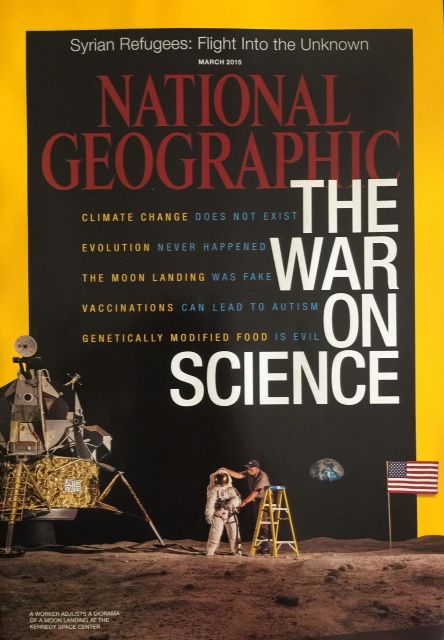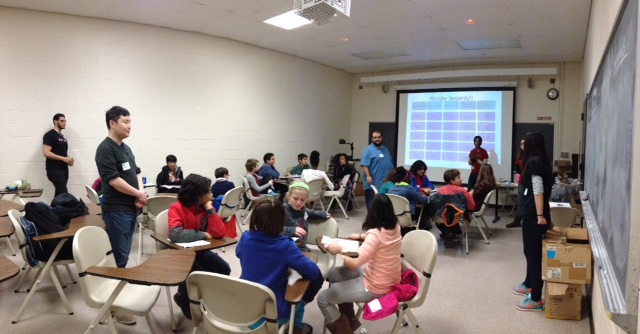“I am interested in Astrobiology”. When they hear that phrase, some people look amused, like I was trying to be funny. Others look at me like I’m crazy, a poor misled scientist, interested in a non-existent field and a disturbed mind (soon to use tax dollars for alien research). Sure, astrobiology sounds as far out as E.T., more like science fiction than science progress. However, scientists in universities all over the world are working on some aspect of astrobiology. The words some aspect are the keys in that sentence. Before we get any further, let me define what astrobiology is and what all it encompasses.
Astrobiology is also known as exobiology. The main goal of this discipline is to explore the possibility of life on other planets, how life evolved on our planet or on other planetary bodies, whether humans might be able to reach and colonize other planets, and whether terrestrial life can be sustained on other planets. If you think about it, this is really an interdisciplinary field that requires knowledge about astronomy, chemistry, biology, evolution, statistics, genetics, mathematics, engineering, space flight, and… the list could go on. So really, most scientists are studying something that could be applied to the field of astrobiology, they may just not have thought about it that way yet.
I can almost see most people’s eyes gloss over at the mention of things like “chemistry” and “statistics”. In fact I think my eyes glossed over a little, so maybe I’m just projecting. The thing is, taken separately, these fields are not all that interesting to me. I admit, I don’t really care about this chemical or that element… but it suddenly becomes more interesting to me when applied to astrobiology. When I think of astrobiology, the likelihood that statistically there has got to be life on some other planets, suddenly all these disciplines (even chemistry) seem a lot more interesting. Suddenly, I want to know what kind of biology could possibly survive in the harsh nooks and crannies of a space, what kind of space engineering would it require for humans to get to that life, what instrument could detect it, and what chemical soup did it evolve in? It’s the equivalent of wearing academic beer goggles. Everything looks a lot sexier to me when viewed through the lens of astrobiology. It even makes me a little giddy at night when I stare up at the sky and imagine what microbes might be thriving in our solar system!
Speculating further about life on other planets, astrobiologists grudgingly acknowledge that it probably won’t be little green men that we find. We are most likely to find microbial life hidden in subterranean permafrost or thriving near hot vents of a vast alien ocean. Mars has plenty of permafrost and used to be like Earth once. No reason it couldn’t harbor life. Europa is known to have a vast ocean covered with ice; it even has thermal energy to keep that water in liquid form. Not a bad habitat for emerging life on a planetoid. Titan has geysers and pools of liquid organic materials, prime environment for a primordial soup. Saturn and Jupiter are massive, who is to say that life couldn’t exist in a small pocket somewhere? The appeal of astrobiology is not in finding E.T. (although that is pretty sexy), but in just being open to the possibilities and allowing the mind to stretch far beyond the immediate science. Astrobiology is a discipline that brings together scientists and citizen enthusiasts from all fields to bond and work towards a common goal.
Astrobiology is also known as exobiology. The main goal of this discipline is to explore the possibility of life on other planets, how life evolved on our planet or on other planetary bodies, whether humans might be able to reach and colonize other planets, and whether terrestrial life can be sustained on other planets. If you think about it, this is really an interdisciplinary field that requires knowledge about astronomy, chemistry, biology, evolution, statistics, genetics, mathematics, engineering, space flight, and… the list could go on. So really, most scientists are studying something that could be applied to the field of astrobiology, they may just not have thought about it that way yet.
I can almost see most people’s eyes gloss over at the mention of things like “chemistry” and “statistics”. In fact I think my eyes glossed over a little, so maybe I’m just projecting. The thing is, taken separately, these fields are not all that interesting to me. I admit, I don’t really care about this chemical or that element… but it suddenly becomes more interesting to me when applied to astrobiology. When I think of astrobiology, the likelihood that statistically there has got to be life on some other planets, suddenly all these disciplines (even chemistry) seem a lot more interesting. Suddenly, I want to know what kind of biology could possibly survive in the harsh nooks and crannies of a space, what kind of space engineering would it require for humans to get to that life, what instrument could detect it, and what chemical soup did it evolve in? It’s the equivalent of wearing academic beer goggles. Everything looks a lot sexier to me when viewed through the lens of astrobiology. It even makes me a little giddy at night when I stare up at the sky and imagine what microbes might be thriving in our solar system!
Speculating further about life on other planets, astrobiologists grudgingly acknowledge that it probably won’t be little green men that we find. We are most likely to find microbial life hidden in subterranean permafrost or thriving near hot vents of a vast alien ocean. Mars has plenty of permafrost and used to be like Earth once. No reason it couldn’t harbor life. Europa is known to have a vast ocean covered with ice; it even has thermal energy to keep that water in liquid form. Not a bad habitat for emerging life on a planetoid. Titan has geysers and pools of liquid organic materials, prime environment for a primordial soup. Saturn and Jupiter are massive, who is to say that life couldn’t exist in a small pocket somewhere? The appeal of astrobiology is not in finding E.T. (although that is pretty sexy), but in just being open to the possibilities and allowing the mind to stretch far beyond the immediate science. Astrobiology is a discipline that brings together scientists and citizen enthusiasts from all fields to bond and work towards a common goal.


 RSS Feed
RSS Feed
